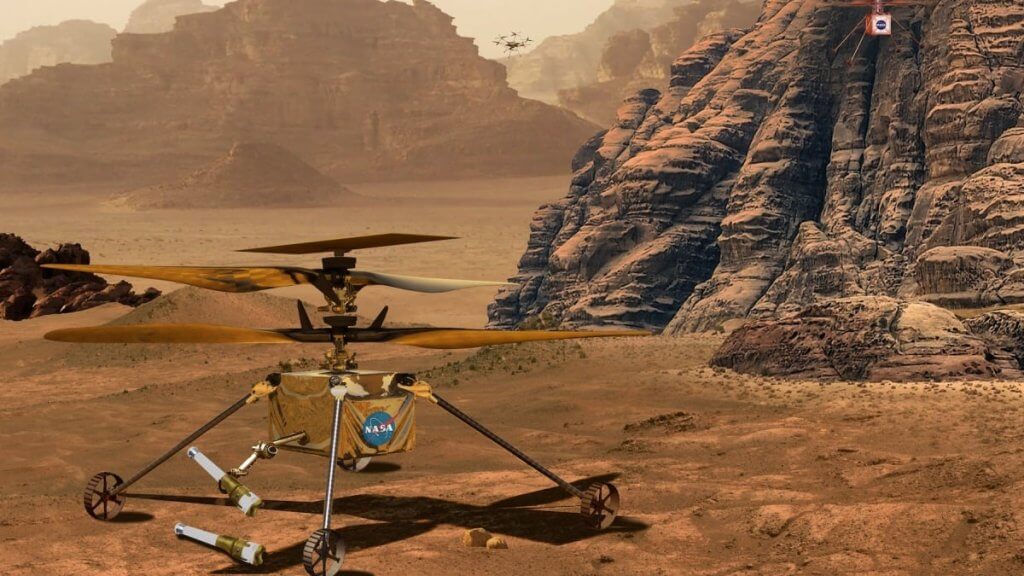NASA proved it can fly a helicopter on Mars. Now, it’s building a more advanced Martian chopper.
The space agency released footage of the testing of its next-generation helicopter’s new blades and rotors, which will ultimately allow for a more capable robotic Mars helicopter. The current helicopter, Ingenuity, became the first craft to make a powered, controlled flight on another planet, and has now flown 66 times and counting.
“We spun our blades up to 3,500 rpm, which is 750 revolutions per minute faster than the Ingenuity blades have gone,” Tyler Del Sesto, a NASA robotics engineer, said in a statement. “These more efficient blades are now more than a hypothetical exercise. They are ready to fly.”
(Cutting through the profoundly Martian atmosphere, the blades rotate much faster than helicopters on Earth, where blades spin at some 400-500 rotations per minute.)
In the footage below, filmed at the NASA Jet Propulsion Laboratory’s 85-foot-tall Space Simulator, you can watch engineers testing the latest rotors and spades in Mars-like environs. The blades almost reached the speed of sound, or supersonic speed. “The challenge is, as the blade tips approach supersonic speeds, vibration-causing turbulence can quickly get out of hand,” NASA explained.
Future Mars helicopters will be larger and more powerful than Ingenuity (a demonstration robot with four-foot-long tip-to-tip rotor blades) and will allow NASA to survey unreachable places. “A proposed follow-on to Ingenuity, the six-rotor Mars Science Helicopter could be used during future Mars missions to serve as an aerial scout and carry between 4.5 and 11 pounds (2 to 5 kilograms) of payload, including science instruments, to study terrain that rovers can’t reach,” the agency said.
Some of these future Martian craft may even ferry tubes of Mars rock and soil back to a craft that will launch from Mars, bringing these unprecedented samples to Earth.
Want more science and tech news delivered straight to your inbox? Sign up for Mashable’s Light Speed newsletter today.
Meanwhile, the Ingenuity craft continues to help NASA’s car-sized Perseverance rover sleuth the forbidding Martian terrain for potential hints of past microbial life — should any have ever existed. The craft has covered 9.3 miles (14.9 kilometers) and reached as high as 78.7 feet (24 meters). Ingenuity and Perseverance are exploring Mars’ Jezero Crater, a river delta that planetary scientists think once teemed with water, and could have been a place for microbes to thrive.
It’s an ambitious exploration effort. So far, these Martian robots haven’t found any compelling signs of ancient life.
Topics
NASA

